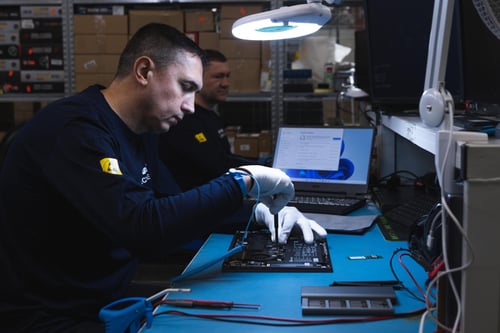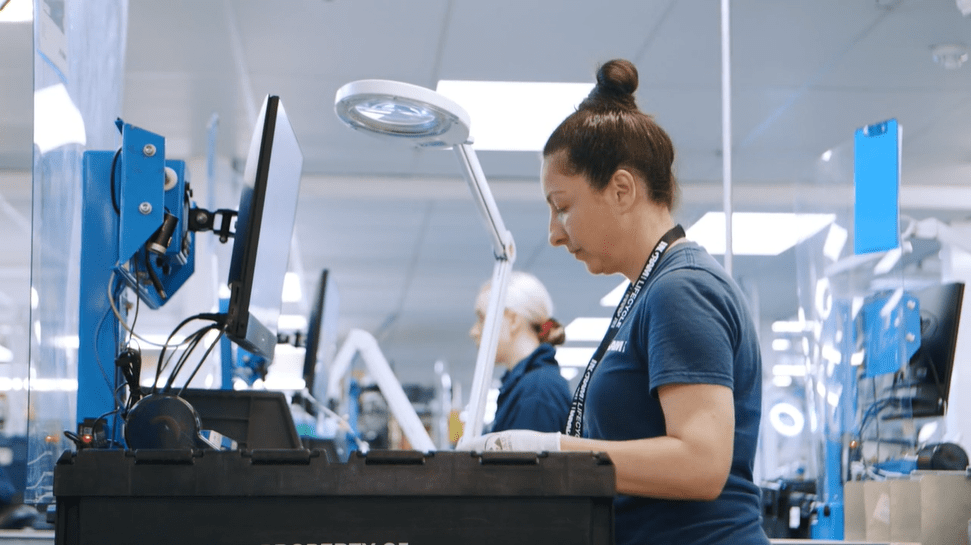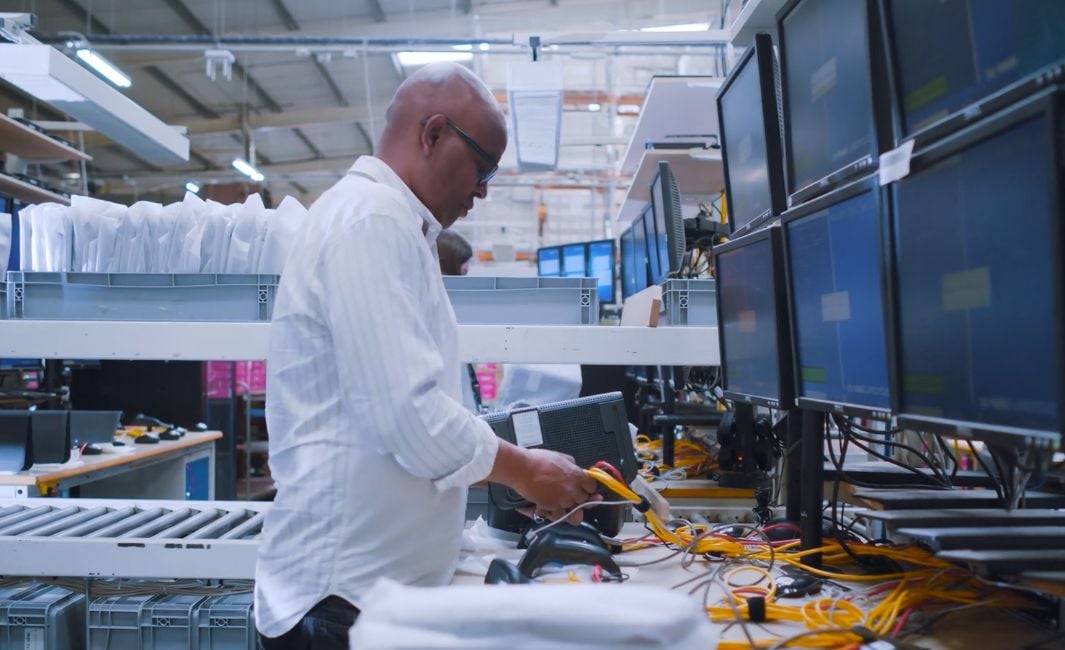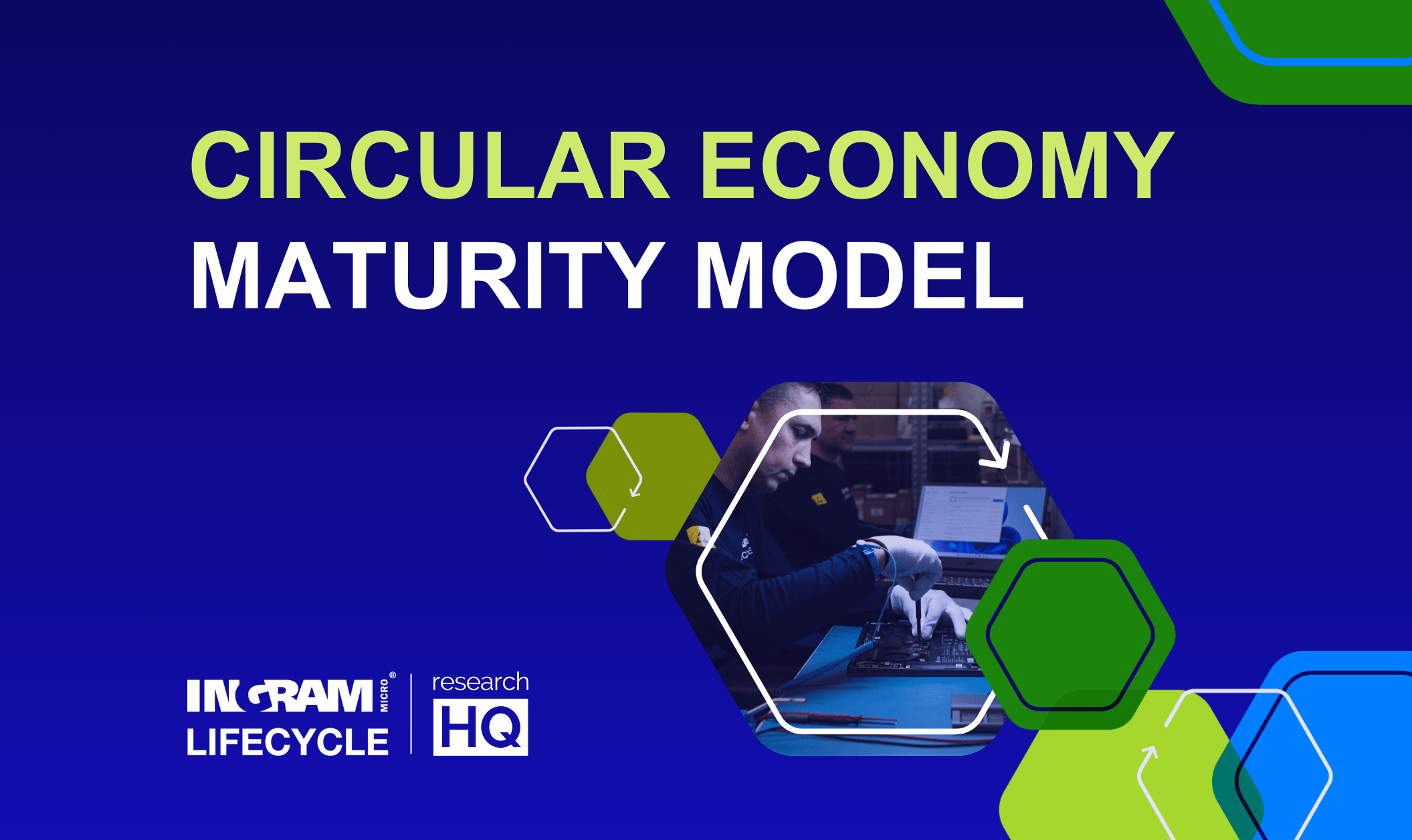Circular Economy Maturity Model (CEMM)

Introduction
The circular economy is rapidly emerging as a solution to the worldwide environmental and resource challenges facing industries. According to Accenture, transitioning to a circular economy could unlock $4.5 trillion in global economic output by 2030. As businesses strive to move away from the traditional linear “take, make, dispose” model, they must adopt practices that promote recovery, which includes repair and refurbishment that ultimately enables increased reuse. This shift is not just a sustainability imperative but a strategic necessity for long-term growth.
However, integrating circular economy principles into existing operations presents significant challenges. Organisations must develop new governance frameworks, optimise resource efficiency, build effective reverse logistics systems, and ensure robust measurement and reporting of sustainability metrics. The complexity of this transformation requires not only operational adjustments but also advanced technologies like AI, IoT, and blockchain, as well as deep collaboration across value chains.
This is where the Circular Economy Maturity Model (CEMM) comes into play. Developed by Ingram Micro Lifecycle (IML) in collaboration with Research HQ, the CEMM offers a structured framework that helps businesses assess and improve their circular economy practices. Designed for organisations of all sizes, focusing on the high-tech electronics sector, the CEMM enables companies to navigate the complexities of the circular economy, unlocking new opportunities for innovation and sustainable growth.
By enabling a circular economy for its customers, IML provides the expertise, advanced technology, and strategic partnerships necessary to support businesses in their sustainability journey. The CEMM aligns these circular economy efforts with overall business success while allowing businesses to unlock the full potential of their returns. This comprehensive approach demonstrates why IML is committed to driving sustainable practices and helping companies thrive in a circular economy.
Understanding the Circular Economy Maturity Model (CEMM)
Let’s step back and explore why the Circular Economy Maturity Model (CEMM) is such a transformative tool. Imagine having a detailed yet flexible roadmap that guides your organisation in evaluating where you stand in your circular economy efforts, defining where you want to go, and providing a clear path to get there. That’s precisely what the CEMM offers – a strategic framework to empower organisations to master circular economy principles and achieve sustainability excellence.
At its core, the CEMM has four key objectives:
1. Assessing your organisation’s current circular economy maturity
Identify how well your business incorporates circular practices across strategy, operations, and product lifecycles.
2. Defining where you want to be in the next 6 to 12 months
Set clear goals for advancing your circular economy initiatives, from improving resource efficiency to fully integrating lifecycle management.
3. Allocating resources strategically to bridge the gap
Prioritise the tools, technologies, and partnerships necessary to progress significantly in your circular economy journey.
4. Fostering collaboration across teams and stakeholders
Build a culture of cooperation within your organisation and across your value chain, aligning all parties toward shared sustainability goals.
The CEMM builds on established circular economy best practices but takes it further by tailoring the model to meet the specific needs of diverse industries and businesses of all sizes. By focusing on critical dimensions such as strategy and governance, resource efficiency, product lifecycle management, stakeholder collaboration, and measurement and reporting, the CEMM addresses your organisation's unique challenges and opportunities in its circular economy journey.
This model provides a flexible yet structured approach, offering organisations a way to measure their progress, make informed decisions, and continually improve their sustainability practices.
Who is This Model For?
The Circular Economy Maturity Model (CEMM) is designed to serve a broad range of professionals, from high-level decision-makers responsible for strategy to hands-on implementers managing day-to-day operations. By tailoring its insights and actions, the model ensures relevance and usability across various roles in logistics, supply chain, operations, and ESG (Environmental, Social, Governance).
Logistics Roles
Decision-Makers
Roles such as Director of Logistics, Senior Logistics Manager, Head of Logistics, and Asset Recovery Manager focus on setting strategies that align circular economy principles with logistics operations. The CEMM guides on building reverse logistics systems, optimising returns and recovery, and setting high-level KPIs to track the efficiency of these processes.
Implementers
Roles such as Logistics Coordinators, Warehouse Executives, and Logistics Specialists are responsible for executing the strategies decision-makers outline. The CEMM offers practical steps for managing returns, maximising recovery rates, and improving warehouse efficiency. KPIs include recommerce rates, resource utilisation, and streamlined returns handling.
Supply Chain Roles
Decision-Makers
Titles like Supply Chain Director, Director of Global Supply Chain, and Returns Manager are tasked with transforming linear supply chains into circular, resilient systems. The CEMM offers strategic guidance on closed-loop systems, circular procurement, and supplier collaboration. Key metrics include waste reduction, resource recovery, and sustainable supplier performance.
Implementers
Roles such as Returns Specialists and Supply Chain Operations Specialists handle executing circular supply chain initiatives. The model provides actionable steps for managing material recovery, sustainable sourcing, and supplier relationships, with KPIs focused on return efficiency, resource recovery, and material flow.
Operations Roles
Decision-Makers
Roles like Senior Manager Finance Operations, Commercial Manager, and Recommerce Manager focus on aligning circular economy initiatives with broader business goals. The CEMM helps them identify cost-saving opportunities through waste reduction and efficiency improvements. Strategic KPIs include operational cost savings and increased profitability from refurbished or reused products.
Implementers
Roles such as Business Operations Specialists execute these circular economy initiatives within the business’s daily operations. The CEMM provides them with clear, actionable steps to integrate circularity into workflows, focusing on process optimisation and waste minimisation.
ESG Roles
Decision-Makers
Titles like Head of Sustainability, Environmental Directors, and Sustainability Manager are responsible for integrating sustainability into the core business strategy. The CEMM helps them track and meet vital environmental goals, such as reducing carbon emissions and improving resource efficiency. High-level KPIs include reducing carbon footprint and complying with sustainability standards.
Implementers
Roles such as Sustainability Analysts and Environmental Compliance Specialists focus on tracking, reporting, and implementing sustainability initiatives. The model offers detailed guidance on measuring the environmental impact of circular practices and ensuring compliance with regulations, with KPIs around waste reduction, resource efficiency, and reporting accuracy.
How the CEMM Supports Both Groups
Decision Makers
The CEMM provides strategic direction and high-level KPIs for decision-makers, helping them embed circular economy principles into their core strategies. It equips them with the insights needed to set goals, allocate resources, and measure long-term success.
Key High-Level KPIs
Waste Reduction: Track overall reductions in waste generation across the business.
Resource Efficiency: Measure efficiency in using resources, including raw materials and energy.
Carbon Footprint: Monitor reductions in carbon emissions linked to circular economy efforts.
Financial Impact: Track the cost savings and new revenue streams from circular economy activities, such as refurbishment and recommerce.
Implenters
The CEMM translates these strategies into actionable steps for implementers, offering them the tools, technologies, and operational KPIs to execute these initiatives effectively. Whether managing logistics, supply chain, operations, or ESG, the model provides practical guidance to drive efficiency and sustainability.
Operational KPIs
Recommerce Rates: Measure the percentage of returned products that are resold or reused.
Recovery Efficiency: Track how efficiently materials and products are recovered and reintegrated.
Waste Reduction: Track the reduction in operational waste through circular practices.
Return Processing Time: Measure the efficiency of returns management processes.
Tools and Technology for Circular Economy Practices
To support the practical application of circular economy initiatives, the CEMM recommends the following tools and technologies:
AI for Returns Prediction
Improve returns efficiency and minimise waste by predicting return volumes and optimising processing times.
Blockchain for Supply Chain Transparency
Track materials and products throughout their lifecycle to ensure sustainability and enable efficient recovery.
IoT for Real-Time Monitoring
Use IoT devices to track product usage, returns, and the condition of items throughout the supply chain.
Advanced Analytics for Resource Efficiency
Leverage data analytics tools to measure resource use, optimise recovery processes, and predict future circular economy needs.
The Circular Economy Maturity Model (CEMM): A Framework for Sustainable Transformation
In an era of increasing environmental concerns and resource scarcity, the circular economy has emerged as a promising solution for sustainable business practices. The Circular Economy Maturity Model (CEMM) by Ingram Micro Lifecycle and Research HQ offers a versatile framework adaptable to organisations of varying sizes and across different industries.
By assessing and improving circular economy principles in five key dimensions—Strategy and Governance, Resource Efficiency, Product Lifecycle (including Returns, Recovery, and Recommerce), Stakeholder Collaboration, and Measurement and Reporting—the model accommodates the unique challenges and opportunities faced by both small enterprises and large multinationals, ensuring its relevance and applicability across diverse business contexts. Recovery, which includes essential processes such as repair, refurbishment, and recycling where necessary, is vital to ensuring products are reintroduced into the economy and resources are maximised.
At the provisional stage, organisations often need more formal strategies for circular economy practices. This results in inefficient resource use, linear product lifecycles, minimal stakeholder collaboration, and little to no measurement of circular economy metrics. Additionally, essential digital tools must be utilised more, with limited integration of emerging technologies like AI, IoT, or blockchain. Returns, recovery, and recommerce activities are generally absent or minimal, as the focus remains on traditional linear processes.
As organisations advance to the reactive stage, they establish basic strategies and governance structures in response to external pressures. Efforts to improve resource efficiency and extend product lifecycles emerge, though these initiatives often need to be more coordinated, and stakeholder collaboration needs to be improved and more consistent. Initial steps towards managing returns and recovery appear, usually driven by customer demands or regulatory requirements, with early-stage recommerce activities beginning to take shape.
In the structured stage, organisations implement more formal strategies and governance frameworks that drive systematic improvements in resource efficiency and product lifecycle management. Stakeholder collaboration becomes more organised, with transparent communication and alignment on circular economy goals. Measurement and reporting practices also take shape, with regular tracking of key metrics, though the approach may still be relatively primary. At this stage, returns processes are formalised, recovery efforts are systematically implemented, and recommerce becomes a structured business activity with established channels for refurbished products.
By the integrated stage, circular economy principles are deeply embedded in both strategy and governance, leading to continuous enhancements in resource efficiency and the design of products with full lifecycle considerations. Stakeholder engagement becomes proactive, leveraging stronger partnerships and collaboration across the value chain. Measurement and reporting practices advance, incorporating more sophisticated tools and analytics to provide deeper insights into sustainability efforts. Returns management, recovery processes, and recommerce are fully integrated into the product lifecycle, with efficient systems to manage and reintegrate products into the production cycle.
At the optimised stage, the circular economy fully integrates into the organisation’s core strategy and governance, driving innovation and leadership commitment. Resource efficiency is maximised with products designed for reuse, upcycling, and closed-loop systems. Stakeholder collaboration is seamless and supported by advanced technologies that enhance transparency and coordination. Measurement and reporting evolve into predictive analytics, linking circular economy performance directly to overall business success and enabling continuous improvement. Returns, recovery, and recommerce processes are fully optimised, with predictive tools used to anticipate market demand and enhance operational efficiency, contributing to a closed-loop system.
-min.png?width=4000&height=4000&name=CEMM%20Matrix%20%20(210%20x%20210%20mm)-min.png)
A Strategic Tool for Sustainable Transformation
This maturity model is valuable for organisations transitioning towards more sustainable practices. It provides a clear roadmap for progression, allowing companies to assess their current status and plan for future improvements. By addressing multiple dimensions of circular economy implementation—including returns, recovery, and recommerce—the model ensures a holistic approach to sustainability.
As organisations refine their strategies, they can leverage advanced data analytics to track their sustainability efforts, anticipate future trends, optimise operations, and drive innovation to align circular economy performance with overall business success. The model offers a structured approach for systematic enhancements, contributing to a more sustainable future while unlocking new opportunities for innovation and growth.
Next Steps
Ready to take the next step in your circular economy journey? Leverage the Circular Economy Maturity Model to assess where your organisation stands and set clear goals for advancing your sustainability initiatives. Whether at the beginning or aiming to optimise, the CEMM provides the roadmap for success. Contact us today to start integrating circular economy principles into your business operations and unlock new opportunities for growth and efficiency.
We have a free interactive version of the tool available which will provide a tailored report emailed to you with actionable recommendations for circularity improvements.








